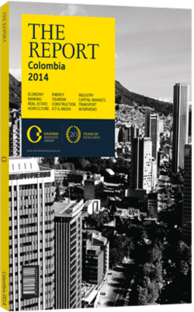High retention rates in some segments provide a stronger market
In line with growth in the insurance sector, reinsurance is becoming increasingly important and new reinsurers are entering the Colombian market. The rising demand for coverage in life and non-life segments, as well as the anticipated development of the infrastructure programme, should offer opportunities to providers.
History
Reinsurance in Colombia began in the 1950s after the government prohibited insurance companies from concentrating more than 20% of their capital and reserves in a single risk. This limit forced insurance companies to reinsure their contracts with entities of recognised solvency. Regulatory changes continued in the following decades, and in the 1990s the government established a framework regarding the organisation of reinsurance companies, their corporate regimes and certain standards of prudence. Also during those years, net retentions for insurance and reinsurance companies were regulated.
In 1996 the government created Registry for Foreign Reinsurance Companies and Brokers (Registro de Reaseguradores y Corredores de Reaseguros del Exterior, REACOEX). In 2010 it issued External Note 045, which regulated net retentions for the surety segment.
Today, insurance companies cannot have a concentration above 10% in any given risk. The “10-10” rule establishes that a reinsurance contract involves a risk transfer if there is a 10% probability of a risk having a loss of 10% or larger for the reinsurer. Even though this method is used as a reference, it has its shortcomings. In the case of catastrophes, such as natural disasters, for example, the chance of occurrence is usually below 10%, but a loss larger than 10% is possible.
Players
Colombia’s reinsurance segment includes leading international companies such as Aon Re, Lloyds, Royal and Sun Alliance Reinsurance, and Willis Re. In recent years, more international companies have joined the market. German provider Munich Re obtained authorisation to operate in 2012 and has been followed by a number of others. Following its entry into Brazil, Chile and Peru, Allianz Global Corporate (AGCS), the reinsurance branch of Germany’s Allianz, obtained a licence to operate in the country in 2013. In February 2013 Swiss reinsurer Swiss Re marked its re-entry to the market after having withdrawn in 2009. Early in 2014, Swiss Re consolidated its presence by acquiring a 51% stake in Bogotá-based insurer Compañía Aseguradora de Fianzas, the market leader in the surety segment. Also in 2014 English firm Howden Insurance Brokers acquired NMB Colombia Corredores de Reaseguros for an undisclosed amount. The purchase of the reinsurance broker followed its acquisition a month earlier of two insurance brokers, Wacolda and Proseguros.
According to the Colombian newspaper El Tiempo, five more companies are interested in entering the reinsurance segment. The firms that are requesting authorisation are Spanish players Mutua Madrileña and Santalucía Seguros, British insurer Bupa, US insurer Berkley and a Mexican insurance company specialising in agriculture insurance.
Performance
The level of insured risk in Latin America is 5%, and it stands even lower in Colombia, while the same indicator in Germany and the US reaches 12% and 10%, respectively. The retention rate, which relates retained premiums as a percentage of the total issued, estimates the percentage of premiums that remain among the risks assumed by the insurance company. The risk representing the remaining percentage is then transferred to the reinsurance broker.
The retention rate in 2013 for the Colombian insurance sector was 83%, up from 81% in 2012. The life segment presented a 93.5% retention rate in 2012 and 94.4% in 2013. In this segment, the personal accidents policies saw the highest risk transfer with a 79.9% retention rate. Disability and survival policies followed with a retention rate of 83.4%. The non- life segment had a 71% retention rate in 2013, up slightly from 70.4% in 2012. Higher risks posed by non-life lines, such as fire, earthquake and surety force these insurers to transfer more of their risks. These three policy lines had retention rates of 39.4%, 45.6% and 49.3%, respectively.
You have reached the limit of premium articles you can view for free.
Choose from the options below to purchase print or digital editions of our Reports. You can also purchase a website subscription giving you unlimited access to all of our Reports online for 12 months.
If you have already purchased this Report or have a website subscription, please login to continue.

